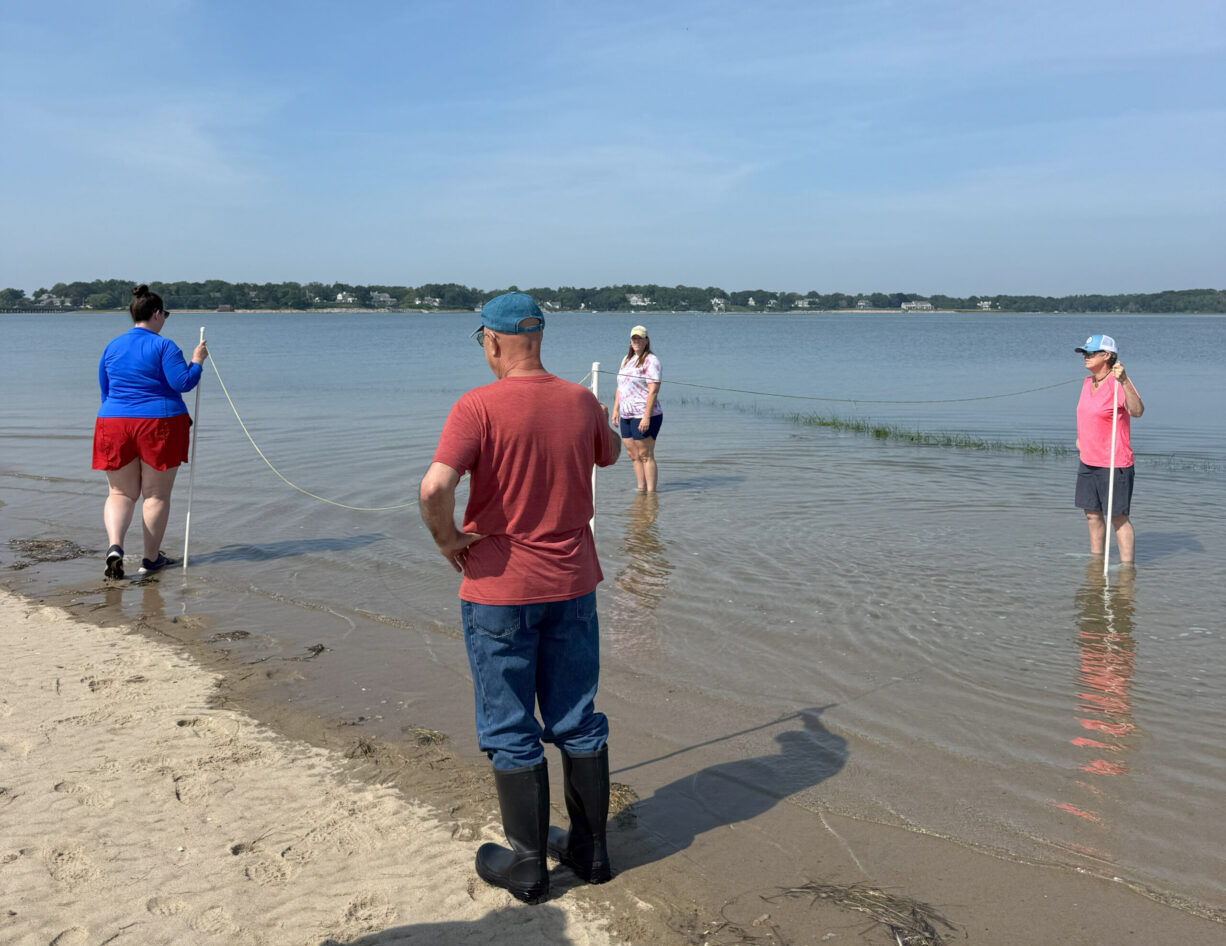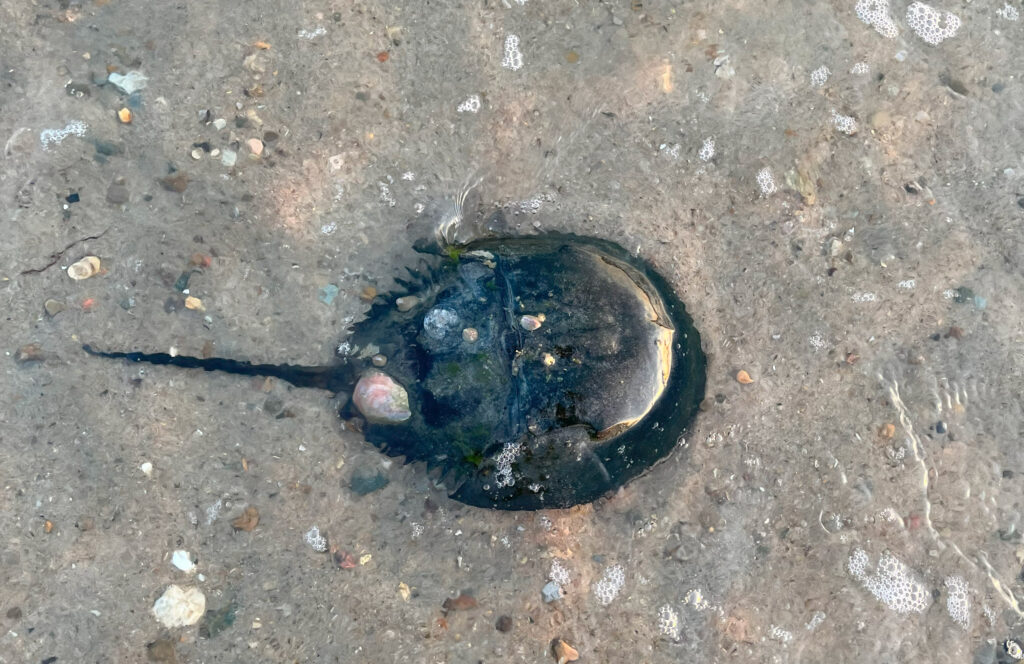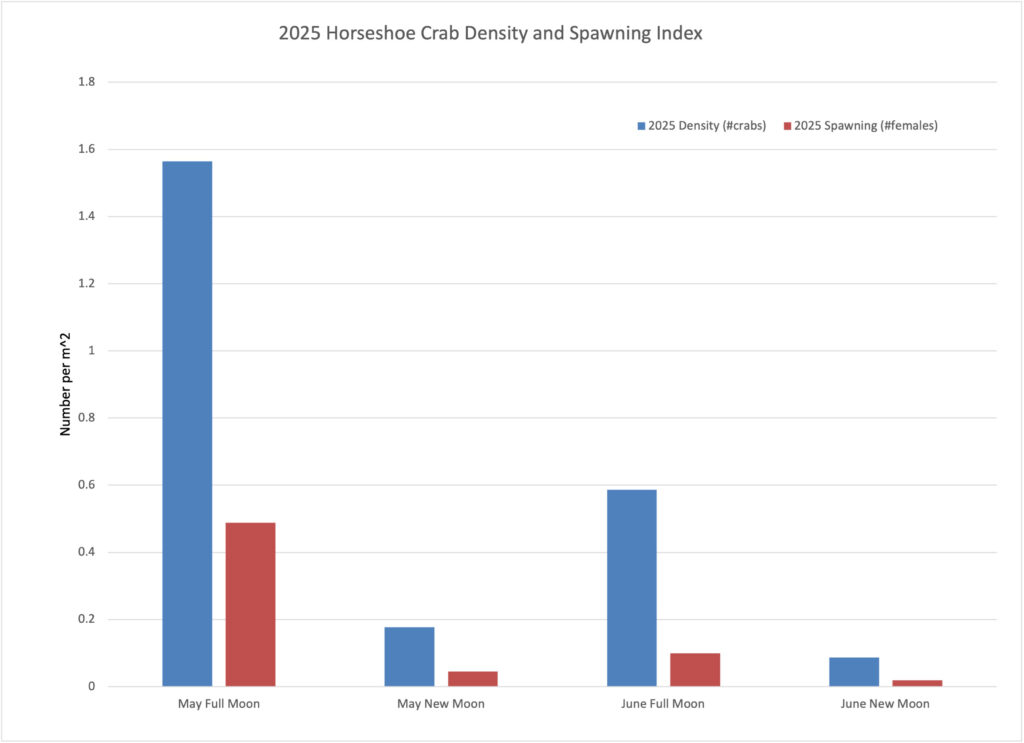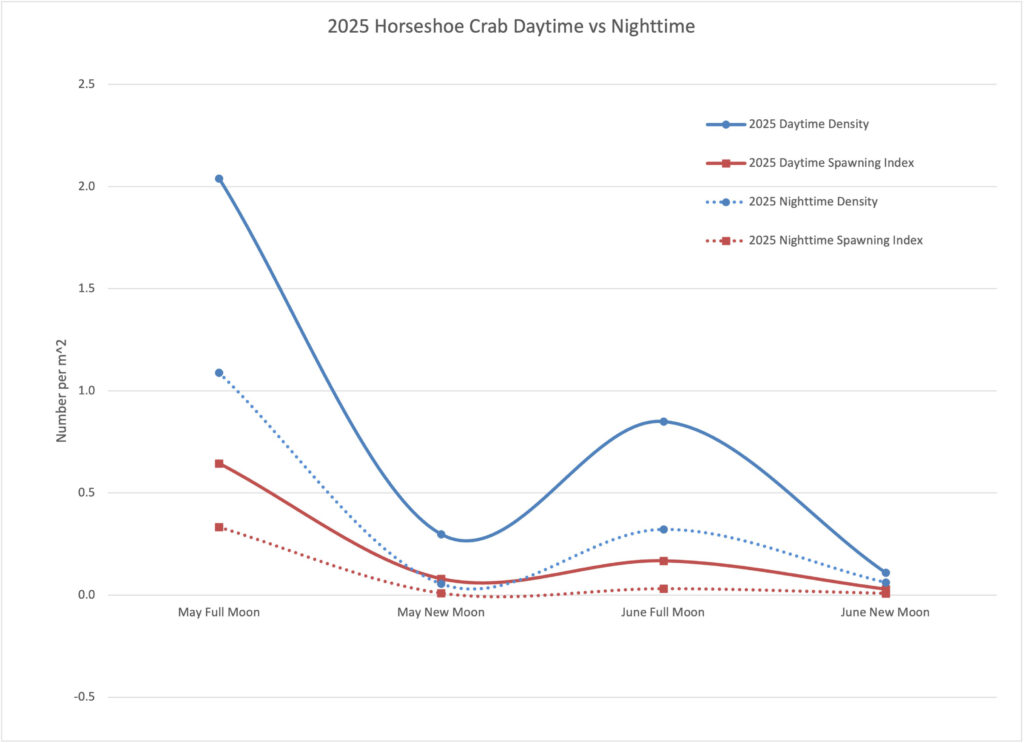
This year, MassBays and NSRWA completed their seventeenth year of horseshoe crab monitoring in Duxbury. Duxbury is one of sixteen sites across the state that are part of the Massachusetts Horseshoe Crab Spawning Surveys, managed by the Massachusetts Division of Marine Fisheries (DMF). In April of 2024, DMF introduced a new regulation that prohibits the harvest of horseshoe crabs during their spawning season in all Massachusetts waters, from April 15 to June 7. This regulation is critical to protecting horseshoe crabs during their most vulnerable life stage, and may lead to a population rebound.
Horseshoe crabs are both fascinating to observe and essential to our local ecology. Their activity mixes up sediment and adds vital oxygen back into the mudflats. Horseshoe crab eggs are even a key food source for many migrating shorebirds, like the ruddy turnstone and the threatened red knot.

Horseshoe crabs are also important for humans, which primarily drives their harvesting. They are used as bait for several fisheries, including eel, conch, and whelk. Most notably, the iconic blue blood from horseshoe crabs is used to test for bacterial contamination in vaccines. By documenting horseshoe crab population trends, citizen science programs across the state provide valuable data that helps DMF manage, conserve, and protect this charismatic species.
For this year’s Duxbury surveys, the NSRWA and MassBays put out a call for citizen science volunteers in April. With help from partner organizations like the Duxbury Beach Reservation, almost 60 volunteers were recruited. After receiving training, these dedicated citizen scientists conducted 24 surveys from May 10 to June 28. These surveys are specifically selected to occur on high tides around the new and full moons. In fact, about half the surveys are conducted in the middle of the night! This makes for some incredibly unique surveying experiences under moonlit or moonless nights on the beach.
In 2025, the total density of crabs (crabs/m^2) and the spawning index (females/m^2) both peaked during the third daytime survey on May 14 (Fig. 1). There were a total of 63 females and 140 males observed during the May 14 survey!

There were also more horseshoe crabs observed during the daytime surveys, as compared to the nighttime surveys (Fig. 2). Males dominated the daytime surveys while female abundance was also high (Fig. 2), which is consistent with results from 2024.

The 2025 crab density (0.60 crabs/m^2) was higher than both 2023 and 2024, but was slightly lower than the 5-year rolling average of 0.81 crabs/m^2 (Fig. 3). The spawning index (0.16 females/m^2) was also higher than 2024, but lower than the 5-year average (Fig. 3). Much like last year, we anticipate that it may take several years before the DMF regulations result in any changes to our local horseshoe crab populations.

Thank you to all of our citizen science volunteers for their dedication to our horseshoe crab monitoring program, even through inclement weather and late night surveys. Be sure to look out for our 2026 call for volunteers so you can become a citizen scientist!

